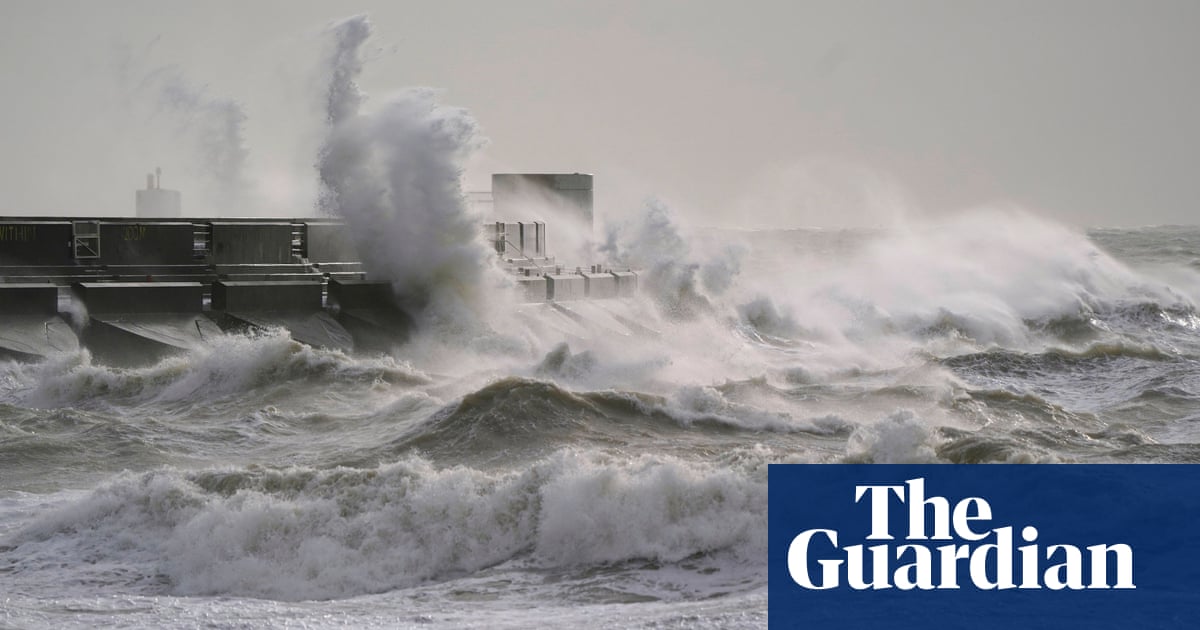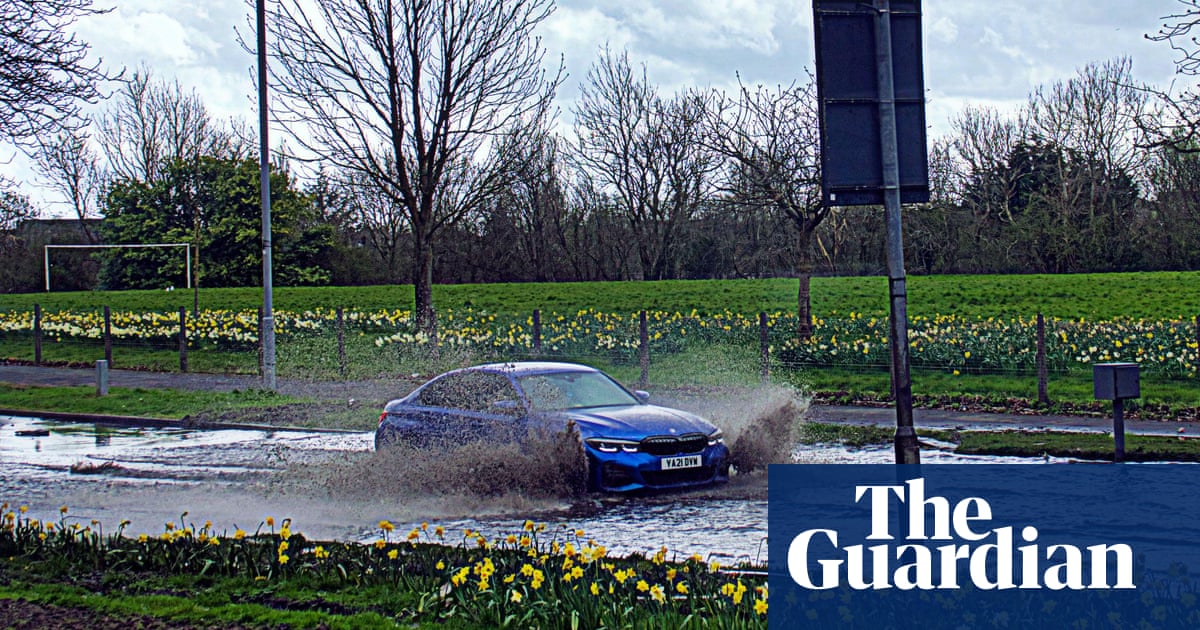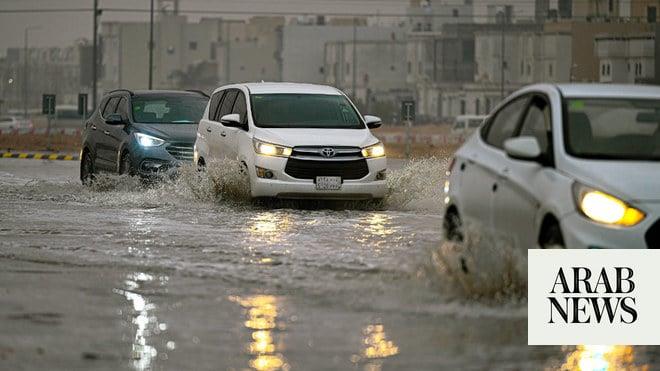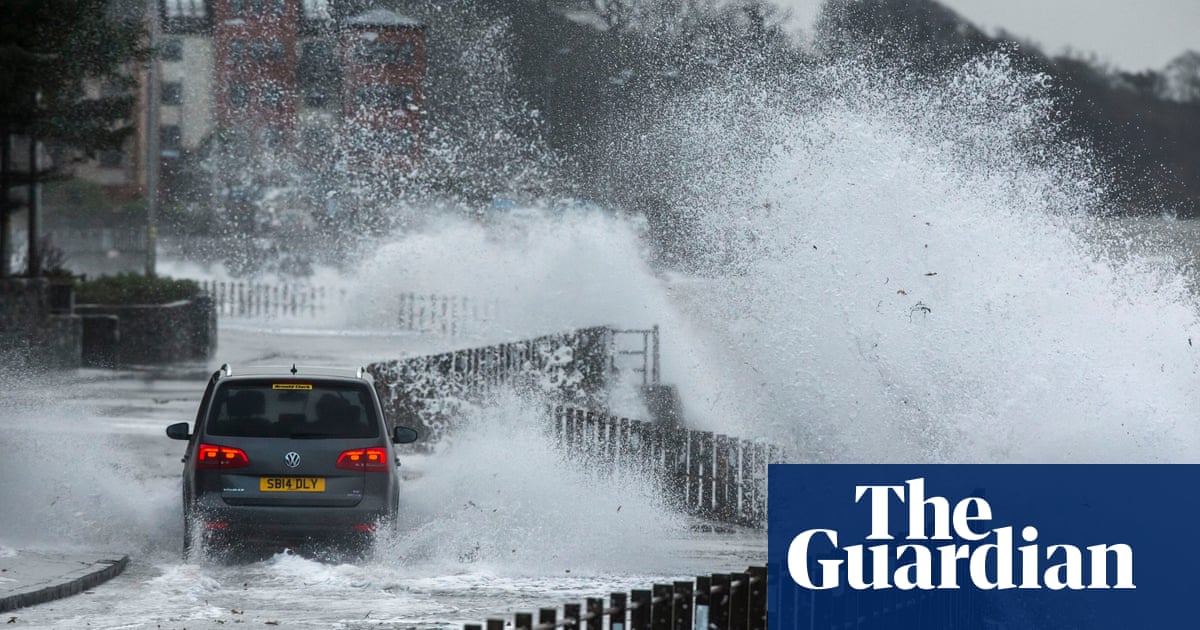
Tropical Storm Henri made landfall in Rhode Island on Sunday, packing high winds and heavy rains that were projected to leave devastation from New Jersey and New York up to Massachusetts.
At the White House, Joe Biden said he had approved emergency declarations to aid Rhode Island, Connecticut and New York, if necessary.
“While New Englanders are used to dealing with some tough weather,” the president said, “this storm has the potential for widespread consequences across the region with significant flooding and power outages that could affect hundreds of thousands of people.”
The National Hurricane Center (NHC) said Henri came ashore in the town of Westerly around 12.30pm. It packed maximum sustained winds of 60mph and produced 19ft waves in some places, before weakening to sustained winds of 50mph as it moved inland.
Rhode Island briefly shut down major bridges. All roads to the beach community of Misquamicut were closed because of wind-driven flooding. The small cluster of hotels and cottages was heavily damaged in 2012 by Superstorm Sandy.
National Grid reported 74,000 customers without power in Rhode Island and EverSource reported nearly 20,000 customers out in Connecticut.
The storm was downgraded from a hurricane before making landfall but still packed gusts of up to 75mph. Officials warned of widespread flooding in inland areas as the storm was expected to sweep west from the coast before turning back north-east.
Millions braced to ride out the worst. As the storm approached, one Westerly resident, Collette Chisholm, 20, said waves were much higher than normal but she wasn’t concerned.
“I love storms,” she said. “I think they’re exciting, as long as no one gets hurt.”
Some of the highest rain totals were expected inland. In one of his final appearances before stepping down on Monday over a sexual harassment scandal, New York governor Andrew Cuomo said the state’s primary concern lay in inland areas.
Rainfall in the Catskills “is a significant problem”, Cuomo said. “In the Hudson Valley you have hills, you have creeks, the water comes running down those hills and turns a creek into a ravaging river. I have seen small towns in these mountainous areas devastated by rain. That is still a very real possibility.”
Towns throughout New Jersey reported heavy rains and street flooding. Some got as much as 8in by midday Sunday.
Television footage showed flash flooding or overflowing brooks and stranded cars, some with water up to the windows. Governor Phil Murphy told News 12NJ the storm had so far been “a big rain event”.
Marshall Shepherd, director of atmospheric sciences at the University of Georgia and a former president of the American Meteorological Society, said Henri was reminiscent in some ways of Hurricane Harvey, a slow-moving storm that pummeled the Houston area in Texas in 2017.
Troy Buckner of Southampton, in eastern Long Island’s Hamptons, wouldn’t let the storm interrupt his routine of getting coffee with his dad at the Golden Pear, one of the few spots open on Main Street on Sunday morning.
“We thought we’d still try to keep a little bit of normalcy but we’re heading back home for the remainder,” Buckner said as rain pelted down. “We plan for the worst. You just never know. We always anticipate Southampton could be the center, the bull’s eye.”
A lack of major roadways on the eastern end of Long Island makes mass evacuations untenable, East Hampton mayor Jerry Larsen said.
“We have one lane of travel leaving the Hamptons so it’s a little difficult to order evacuations,” Larsen said. “So most people will shelter in place and, God willing, everyone will come through this OK.”
Officials in Providence, Rhode Island, and New Bedford, Massachusetts, closed giant hurricane barriers built in the 1960s, after devastating storms in 1938 and 1954. The Massachusetts Steamship Authority canceled all Sunday ferry service between the mainland and the popular vacation islands of Martha’s Vineyard and Nantucket after the US Coast Guard shut down ports. Tourists waiting in their cars, hoping for a last-minute ferry off the islands, were stranded until the worst of Henri passes.
The first thunderstorms bringing what could be up to half a foot of rain arrived late on Saturday, and flash flooding began in some areas. Bands of heavy rain overwhelmed storm drains and drivers plowed through foot-deep water in a few spots in New York City and Newark and Hoboken, New Jersey.
Governor Ned Lamont warned Connecticut residents they should prepare to “shelter in place” from Sunday afternoon through at least Monday morning. The Rhode Island governor, Dan McKee, issued a similar warning.
President Joe Biden declared disasters in much of the region, opening the purse strings for federal recovery aid. The White House said Biden discussed preparations with north-eastern governors and that New York lieutenant governor Kathy Hochul, who succeeds Cuomo on Tuesday, also participated.
Major airports remained open as the storm approached, though hundreds of flights were canceled. Service on some branches of New York City’s commuter rail system was suspended, as was Amtrak service between New York and Boston.
New York hasn’t had a direct hit from a powerful cyclone since Superstorm Sandy. Some of the most important repairs from that storm have been completed, but many projects designed to protect against future storms remain unfinished.
In East Hampton, Norbert Weissberg watched the waves from the edge of a beach.
“I’m always excited about seeing something as ferocious as this,” said Weissberg. “It’s less ferocious than I thought. We’re all geared up for a major, major calamity, and it’s a little less than that.”












